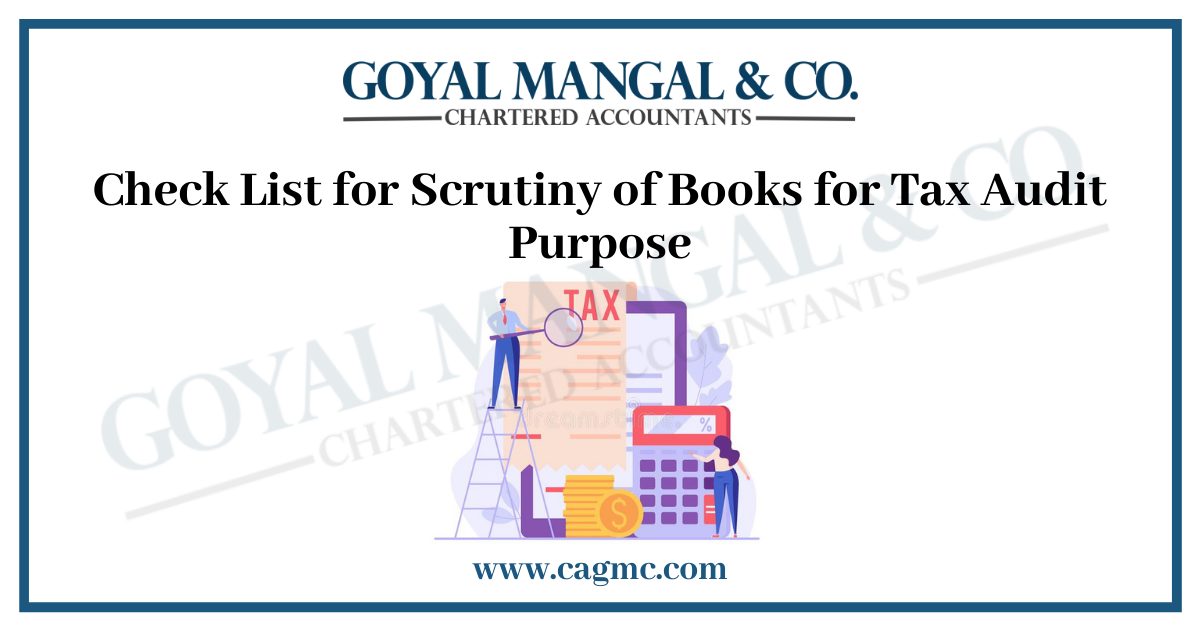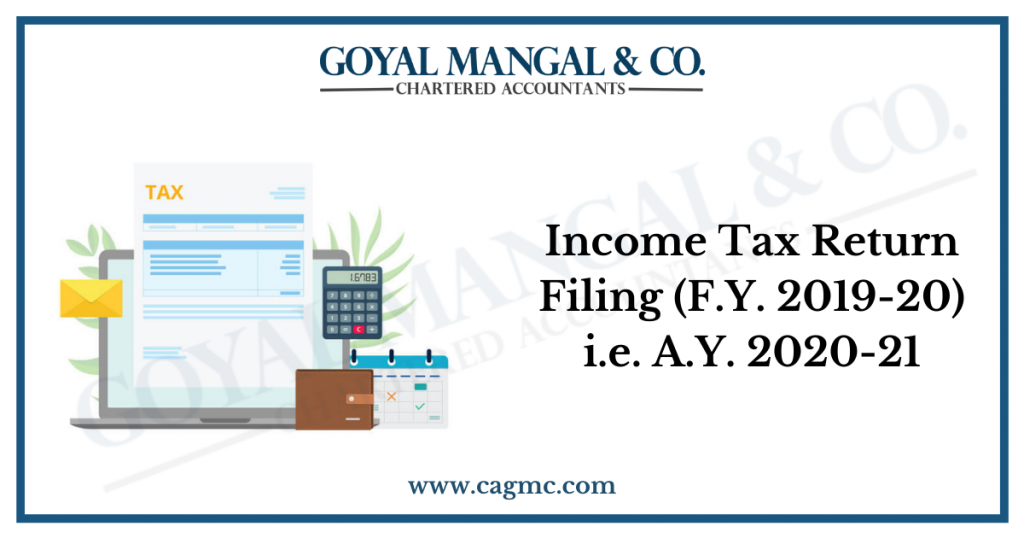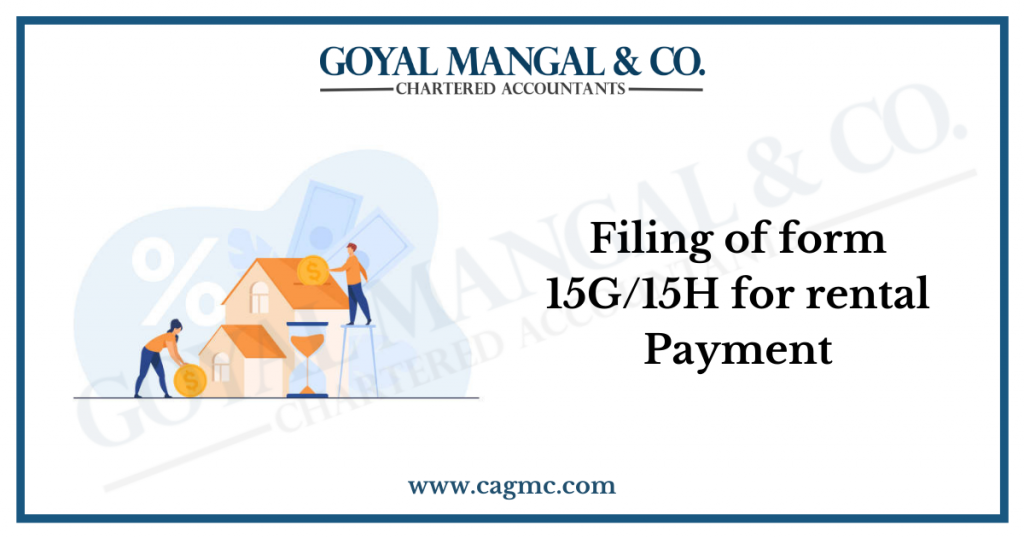
Tax Audit is required to be done for the entities that crosses the threshold as specified by the act. Tax Audit is conducted as per Section 44AB of the act. The report needs to be signed by a chartered accountant and is required to be filed electronically. The main purpose of tax audit is to ensure the accuracy of the financial records and check if there was any fraud or tax evasion. In this article our scope of discussion will be understanding the Tax Audit Checklist issued by ICAI (Institute of Chartered Accountants of India) and how to approach tax audit in the practical scene. So let’s start with basic understanding of Tax Audit and its reporting format.
|
Table of Contents |
Applicability of Tax Audit
As per Section-44AB of Income Tax Act, following people are required to get their accounts audited
- Any person involved in Business, whose annual gross turnover/receipts exceeds Rs.1 crore should get his accounts audited.
- Any person involved in Profession, whose gross receipts/turnover exceeds Rs.50 lakhs should get their accounts audited.
This is the general rule as per Sec.44AB. However, there are certain exceptions to this rule
- If a person opts for presumptive taxation scheme u/s 44AD and his annual gross turnover/receipts does not exceed Rs.2 crores need not get his accounts audited. However, if the person opting for Sec.44AD, choose to show income less than that required as per Sec.44AD, then the accounts need to be audited.
- As per recent budget, any person having gross turnover/receipts up to Rs.10 crores is not required to get his accounts audited if more than 95% of his business transactions i.e. receipts and payments are done through a mode other than cash. This relaxation is a big boon for new and small undertaking and also in line with government’s Digital India initiative.
Report forms involved in Tax Audit
- Form 3 CA- This form is used for entities that are required to get their accounts audited as per provisions of any other law, e.g. companies. In case of companies Form 3CA should be furnished. It contains basic details like Name, Address, PAN of the assessee, Auditor’s name and Membership number, Period covered in Financial Statements, details of form 3CD etc. It contains Auditor’s qualifications/ observations.
- Form 3CB- This form is required to be furnished for assessee who are required to get their accounts audited as per only Income Tax Act and not any other act. This form contains details similar as contained in Form-3CA i.e. Basic details of assessee and basic details of auditor and address where books of accounts are kept. It also contains Auditor’s qualifications/observations on books of accounts and declaration from auditor that he has verified all necessary records.
- Form 3CD- This form is required to be submitted with both Form 3CA and Form 3CB. This form contains many points where auditor needs to provide his remarks on the basis of records available to him. Basically, the points that auditor needs to report in Form-3CD becomes the scope of audit and defines the tax audit checklist.
- Form 3CE- This form is applicable in case of foreign companies.
Now, we will discuss that what tax audit checklist is.
What is Tax Audit Checklist?
Institute of Chartered Accountants of India, from time to time gives the checklist for conducting Tax Audit u/s 44AB. In this part of the article we will discuss about Tax Audit checklist. The points contained in the Tax Audit checklist can be summarised under following headings as follows-
| Particulars | Points of Checklist |
| General Information |
|
| Taxation and Accounting Policies |
|
| Documents/Records |
|
| Allowances/ Disallowances |
|
| Expenses |
|
| Income |
|
| Information Regarding Business |
|
| Other Important Aspects |
|
How to approach Tax Audit?
From the above discussion, we can see what all points auditor will need to check to prepare his tax audit report. Now, we will see that to analyse all these aspects what are procedures that will be followed-
- Obtaining all records– First and foremost all the documents and financial statements should be obtained. The opening balances should be verified with the previous years audited statements. Check previous remarks and points as reported in previous year’s Form-3CD.
- Checking Compliance of Tax laws- All the details for payments of direct and indirect tax liabilities i.e. TDS and GST should be verified. It should be ensured that all applicable provisions of Tax laws have been complied with.
- Vouching– Vouching means checking all the vouchers of the entity with books of accounts. This helps us to understand that if all the expenses are properly categorised and also tells what are the normal credit terms etc. entered into by the party. Vouching is done for purchase, bank, cash book etc.
- Revenue Recognition- As vouching throws light on the expenses incurred, bank statement tells about various incomes that were earned during the year in addition to regular sales. It should be ensured that all the incomes are booked properly.
- Checking other important transactions-
- Other transactions like sale/purchase of capital asset, receipt of loans and advances should be thoroughly checked.
- The ageing of debtors, creditors should be checked.
- It should be ensured that all accounting policies are being followed consistently, change and effect of such change should be reported in the audit report.
- Cross Verification of details- These days due to varied compliance requirements under various laws, details can be cross-verified. E.g. Purchase and Sales can be cross-verified from GSTR-2A/GSTR-3B. Similarly a part of income can be verified from entries appearing in Form 26AS.
- Thorough ledger scrutiny- Besides following all these steps, thorough ledger scrutiny should be done to ensure that there is nothing unusual or exceptional in the ledger.
- Details of deductions and allowances claimed- Details of deductions and allowances claimed by the assessee should be verified and eligibility should be checked.
- Preparing Audit Report and providing remarks- Once all the details are verified, the auditor needs to prepare the remarks against the points in checklist and provide his observations/qualifications.
Summary
So, this was the discussion about Tax Audit Checklist. In this article we discussed points that are given by ICAI to its members while they are conducting Tax Audits. Also we discussed how the vouching and verification is done by CA’s in practical scenario to comply with the checklist. The aim of following Tax Audit Checklist is to give a scope to the audit and be sure that a comprehensive approach is being followed while verifying the records and accounts of an entity.


